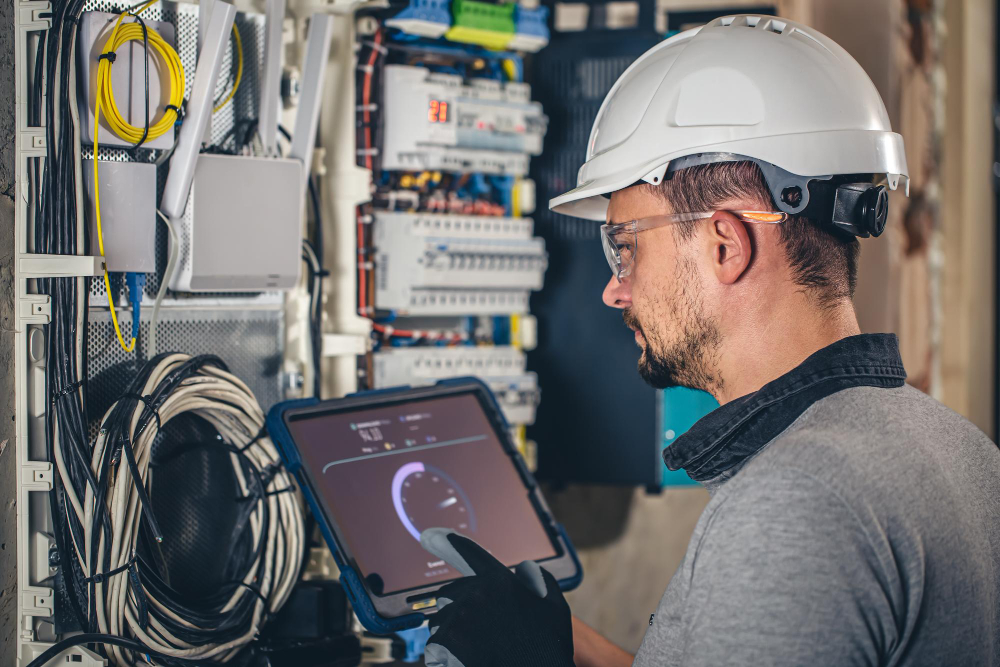
Power substations, the crucial power delivery hubs humming with high voltage electricity, have traditionally been environments demanding utmost vigilance and manual intervention. However, the introduction of automation technologies is revolutionizing safety practices, transforming these once high-risk zones into safer and more efficient workspaces.
Traditional Challenges and Hazards
- Exposure to high voltage: Working near live equipment carries the risk of electrical shock, potentially fatal without immediate and proper care.
- Arc flashes: Accidental contact or equipment failure can trigger intense flashes of light and heat, causing severe burns and injuries.
- Confined spaces: Maneuvering within cramped equipment enclosures puts personnel at risk of entanglement and physical injury.
- Environmental hazards: Extreme weather conditions, noise pollution, and dust add to the complexity and potential dangers of substation work.
Automation to the Rescue
Advanced automation technologies are mitigating these risks significantly:
- Remote Monitoring and Control: Intelligent sensors continuously monitor equipment health, identifying anomalies and potential faults in real-time. This allows operators to control and manage substation operations remotely, minimizing the need for personnel to be physically present in hazardous areas.
- Predictive Maintenance: Machine learning algorithms analyze sensor data to predict equipment failures before they occur. This enables proactive maintenance, preventing potential breakdowns and reducing the need for emergency repairs, which often require on-site intervention.
- Automated Fault Isolation and Response: Smart systems quickly detect faults and automatically reroute power flow, minimizing outage duration and protecting equipment from further damage. This reduces the risk of personnel exposure to hazardous conditions during fault handling.
- Robotics and Autonomous Vehicles: Remote-controlled robots and autonomous drones can perform inspection, maintenance, and repair tasks in high-risk zones, eliminating the need for human presence in danger areas. This is particularly valuable for tasks involving confined spaces or close proximity to live equipment.
Beyond Safety: Additional Benefits
Automation goes beyond just enhancing safety:
- Increased Efficiency: Automated systems streamline operations, optimize power flow, and minimize downtime, leading to cost savings and improved energy delivery reliability.
- Improved Data-Driven Decision Making: Real-time data from sensors and smart systems helps in making informed decisions about grid management, asset utilization, and maintenance planning.
- Enhanced Environmental Sustainability: Optimized power flow and reduced outage times contribute to lower carbon emissions and a more sustainable electricity grid.
The Future of Substation Safety
Automation continues to evolve, bringing even more sophisticated safety solutions to the forefront:
- Augmented Reality: AR technology can superimpose digital information onto the physical environment, guiding technicians during maintenance and repair tasks, minimizing errors and improving efficiency.
- Advanced Cybersecurity: As substations become increasingly connected, robust cybersecurity measures are crucial to protect against cyberattacks that could disrupt critical operations.
- Integration with AI and Machine Learning: Future systems will likely incorporate AI and machine learning for even more intelligent fault prediction, anomaly detection, and automated response capabilities.
Conclusion
Automation is undoubtedly playing a transformative role in enhancing safety measures at power substations. By minimizing human exposure to hazardous environments, predicting and preventing equipment failures, and optimizing operations, these technologies are making substations safer, more efficient, and more sustainable. As automation continues to evolve, we can expect even greater advancements in protecting personnel and ensuring the reliable delivery of electricity.
In the rapidly advancing landscape of power substations, the implementation of automation is pivotal for elevating safety measures. One crucial aspect is the integration of the IEC 61850 Substation Configuration Tool, streamlining communication and ensuring standardized configurations for enhanced operational safety. By leveraging this cutting-edge tool, power substations can not only optimize their performance but also adhere to international standards, fostering a safer and more efficient power distribution ecosystem.




